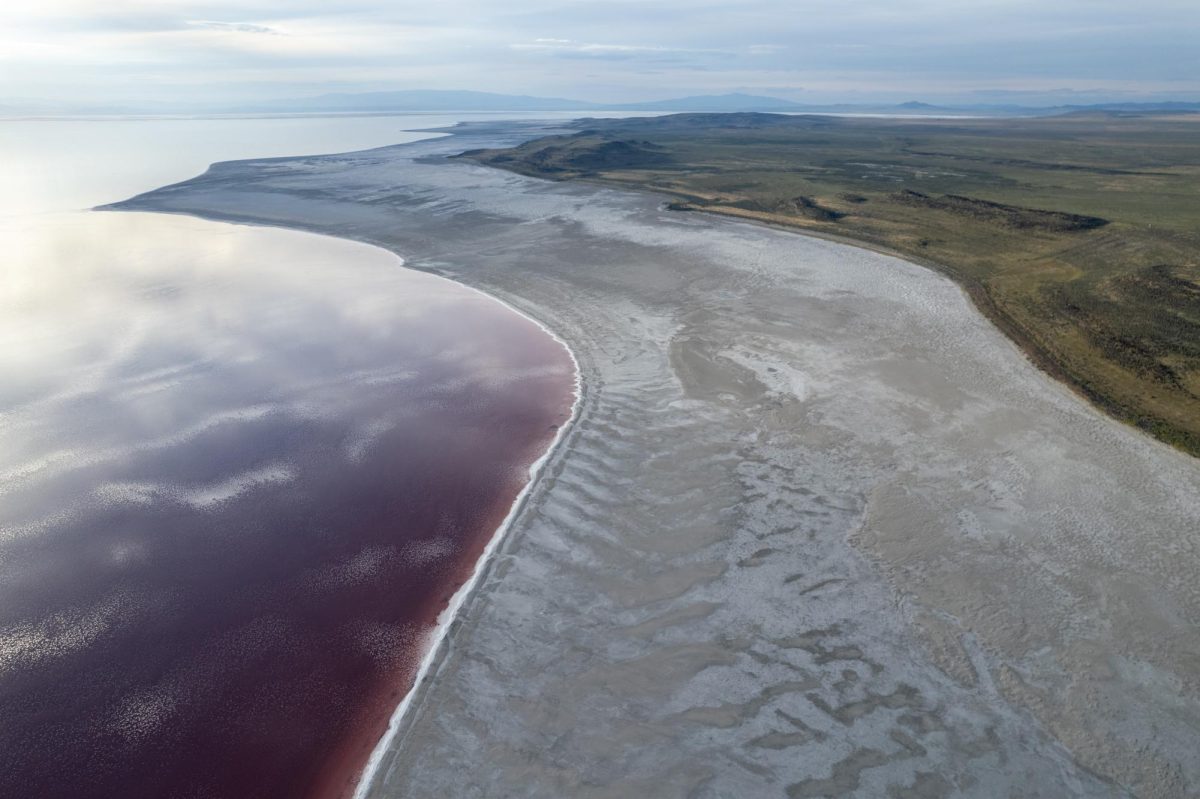After riding 2,300 miles on his bicycle across the Great Salt Lake, a University of Utah professor found that the dust from the lake bed might be more dangerous than expected.
Kevin Perry, professor of atmospheric sciences and co-author of “Assessing the Oxidative Potential of the Great Salt Lake,” spent two years riding across the bed of the GSL collecting soil samples by hand to determine whether there were any heavy metals in the soil.
Perry discovered 13 contaminants of potential concern in his soil surveys, raising potential health risks for people in the surrounding communities.
Potential Risks
This most recent study about the dust’s bioavailability does not directly address whether or not the dust poses a health risk or to whom. However, it addresses how metals found in dust could impact communities surrounding the GSL. Perry explained that chronic exposure to dust can lead to increases in lung, bladder and skin cancers.
The 13 contaminants Perry identified as a potential concern stand out because their concentration in the dust exceeded the Environmental Protection Agency’s Regional Screening Levels, a tool the EPA uses to determine whether or not an element could pose a risk to the public.
According to Perry, these discoveries only make assumptions about the risk the dust poses, such as how often people in communities surrounding the GSL are exposed to the dust or how bioavailable it is.
“The risk depends upon the bioavailability and exposure. It doesn’t matter if the dust is toxic or bioavailable if it’s never transported to surrounding communities and people don’t breathe it,” Perry said.
Crust on Dust
Dust from the GSL can be carried into surrounding communities by wind. Perry explained that winds over 20 mph are capable of carrying the soil, which weather services can predict and send out a dust warning to minimize risk. However, weather services have a harder time evaluating the moisture content of the soil, which plays a large role in whether or not it can become dust.
During his soil surveys on the lake bed, Perry discovered that 75% of the lake bed is covered by a thin crust, which can protect the soil from wind erosion. If the crust breaks down or is destroyed, all it takes is some water to reset it.
Perry said there are many ways Utah can manually reset the crust if there isn’t enough rain to keep it intact.
A few of these techniques were used to mitigate dust from Owens Lake in California. However, Perry said these options could cost upwards of $1 billion.
“The best way to mitigate dust is to put water back in the lake because if the water covers up the dust hot spots, we don’t have to worry about them at all,” Perry said.
Perry pointed out that Utah diverts 30% more water from the streams than is sustainable for the GSL, decreasing the GSL’s water elevation.
“Ultimately, in order to save the Great Salt Lake, we have to reduce our water usage by about 30%,” Perry said.
A 2023 study by Utah State University found that 63% of the water elevation lost in the GSL over the last 150 years can be attributed to agricultural water use. Meanwhile, municipal and industrial water use is responsible for only 12% of the elevation loss.
Perry said that the only way to solve this problem is to work with farmers, not against them.
In 2023, the Utah state legislature funded over $500 million for water conservation, development and infrastructure in hopes of supporting the agriculture industry, allowing it to use water more efficiently, and helping it grow its crops.
Land in Utah that was once used for agricultural purposes tends to eventually be converted to municipal land, which would inevitably decrease the water usage in those areas, Perry said. He added that, until then, farms decreasing their water usage and receiving compensation from the state for saved water is a good start.
“The main takeaway is that the Great Salt Lake is shrinking, and it poses significant economic and potential health concerns,” Perry said. “By saving the Great Salt Lake, we make the economy stronger and improve our air quality.”




